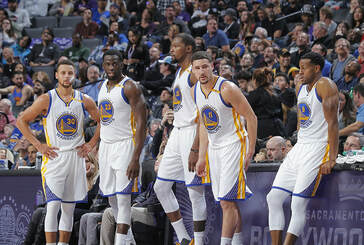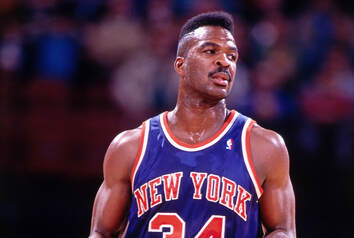by Arron MacDonaldCoach MacDonald digs down into the various ways to defend the pick and roll...  The pick & roll is one of the foremost offensive tactics applied in basketball today at every level of the game, as by executing the pick and roll on offence it causes your opponents to make a decision on the possession – and when there’s any hesitation in that decision-making process, it favours the attacking team. While Stockton & Malone were known for their reliance on it in the 80’s and 90’s, the popularity of this tactic only grew through Mike D’Antoni’s spread pick and roll offence employed with his Suns teams led by Steve Nash, and with the current emphasis on pace and space in the NBA, it’s showing no signs of slowing down any time soon. With the rule changes in youth basketball in England preventing many teams from playing zone for the entire game, it means we’re seeing more pick & roll in youth basketball than at just about any other time. So, when we’re playing against it, how do we stop it? Technically, there’s a few tactics you can employ:
The tactic you’re going to use is going to depend a lot on the personnel you have, and the time you have with your team to work on this, for instance, an NBL Division 1 team is likely to have more time together each week to work on this facet of the game than a local league side. We’ll cover off what each of these means quickly below…  Switching Switching is one of the most commonly-used tactics in defending the pick and roll. Essentially, the two defenders guarding the ball and the screener switch the player that they are guarding at the point of the screen. This can help the defence to guard against direct drives to the basket – as we can keep a player on the ball after the screen. It’s really important to consider the versatility of your players when looking at this coverage. For example, if you have a big who isn’t particularly fleet of foot, employing a switching tactic will likely create an unfavourable mismatch when they switch onto a guard (and likewise if your diminuitive guard is switched onto the opposing team's post behemoth!). It’s also really important to ensure that the players switching are consistent in how they switch. It’s usually easiest to have the player who was guarding the ball go under the screen to contain the roll, while the player switching onto the ball goes over – but not too high, as this can create a driving lane for the ball-handler.  Although switching is the tactic du-jour in the NBA thanks to the ultra flexible “lineup of death” employed so frequently by the Warriors, unless you have a group of defenders of similar size and athleticism as one another, I’d tend to agree with NBA Legend Charles Oakley on the matter (bearing in-mind that Oak spent most of his career with world-renowneded Defensive Gurus Pat Riley and Jeff Van Gundy running his defence); in a recent podcast with Bill Simmons he discussed the recent emphasis on switching screens in the NBA by saying “I don’t like it. Switching is what you do when you can’t defend!” With that in-mind, let’s have a look at some other ways to defend the pick and roll. Hedging Hedging the pick and roll means using the screener’s man to force the ball-handler to change course (away from the basket) as they’re using the screen. It’s most commonly used to defend side pick and rolls, with the screener’s man in stance parallel to the sideline, with one hand on their man’s shoulderblade – ready to jump out and divert the ball-handler away from the basket. By having a hand on the back of the screener, you’re preventing a gap for the ball-handler to split the hedge. After the hedge, they have to recover back to their man. On the ball, the defender can either go under or over the screen, which is a decision for you to make based on the speed of your player and opponent, and their ability to shoot from range. At lower levels, players tend to go under screens to “get back” and protect against the drive. At higher levels, where the players are more likely to connect from three, most coaches will want players to go over the screen. Again, when you’re considering this as an option, it might not be for you if your bigs aren’t particularly agile – as they’ll be prone to collecting fouls on the perimeter, having the ball-handler blow by them, or having the screener quickly slip to the basket for an uncontested score… all of which aren’t desirable outcomes for the defence! Blitzing Blitzing the screen is a tactic whereby both the defenders switch to the ball-handler at the point of the screen, looking to pressure and trap. This is a useful tactic against a score-first guard, and I’ve often seen it employed in younger age groups – where there tends to be one more dominant player on a team. A plus side of using this tactic is that you force the ball-dominant scorer to either make a pass to one of their (weaker?) team-mates, or to take a bad shot in an overload. Unfortunately, it also means that the rest of your team is defending 3v4 – so in order to execute it, your help defence and defensive communication will need to be well-drilled. As with both switching and hedging, a slower big can be your downfall in using this tactic – as again they are apt to be late into the trap, pick up fouls, and leave your team at a disadvantage defensively.  Icing If you watched a lot of Coach Tom Thibodeau’s defences over the past decade, you’ll have heard the word “ICE” bellowed out almost constantly. Thibs’ tactic is becoming more and more commonplace across all of basketball – and is particularly useful when your side has a slower big. Essentially, the "ICE" tactic is just pushing the ball to the sideline. When Icing the pick & roll, the ball-handler’s man is pushing them to the side by getting nose to high shoulder, looking to negate the screen. If they can't negate the screen, they're looking to stay on them through contact – or recover back to them as quickly as possible. The screener’s man sags in a direct line between the ball and the basket (for instance, on a side pick and roll, they’re often a step away from the block, towards the ball). Again this defence requires great help defence, as common counters include a corner to wing lift (often into a second action), or running a pistol action (a handoff to a wing followed by a quick trailing screen on the ball) to confuse the coverage. Essentially, off the ball, when your team is in ICE, you’re almost in a zone, getting weak-side players back to the nail and smile. The ICE tactic is susceptible to allowing open long/mid-range jumpshots from the screener, but that’s often a low percentage shot anyway – so some coaches are open to giving this up (rather than a layup). Whatever tactic you choose to apply in your pick and roll defence, we believe that it must be taught in three layers:
On-ball What is your on-ball defender doing? Are they showing to the sideline? Are they steering away from the screen? Are they going over or under on contact? Screener’s Man Next factor in what the man guarding the screener is doing? Are they looking to switch? Hedge? Blitz? ICE? No matter what they’re doing, they have to communicate the screen to their team-mate early and clearly! Everyone Else Where do you want weak-side defenders? Are we allowing the ball to be fed into a post, or the short corner? Whatever tactic you employ, defensive communication is a pre-requisite for any good defensive team, there is simply no such thing as a "good" defence which is also "quiet". By thinking about, teaching and building your defence in these three layers – while considering how appropriate your tactic is for your personnel and reiterating the importance of effective player-to-player communication - it’ll give you the best chance of being successful in defending the pick and roll. We have a number of drills available to assist you in defending the pick and roll in our Drill Bible, which is available here (and remember, by signing-up for our Mailing List, you'll receive 10% off your first order in our store). Alternatively, if you’d like a ONE2ONE BASKETBALL coach to come and work with your team on defending the pick and roll, get in touch! Comments are closed.
|
Archives
June 2019
|

 RSS Feed
RSS Feed